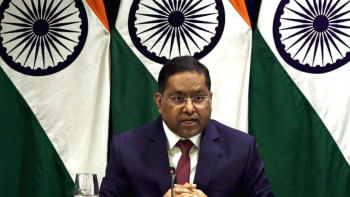What makes a speech great?

This October, UNESCO recognised Bangabandhu Sheikh Mujibur Rahman's March 7 speech as part of the world's documentary heritage. One of the most influential speeches of the country, those 20 minutes at the Ramna Race Course inspired tens of millions of Bangladeshis and laid the seeds for the country's freedom.
It begs the question, what makes speeches great? Is it just passion? Or do you need to plan and package your idea in the best possible manner?
In the case of the speech on March 7, it was both. When you listen to it, the first thing that hits you is its high emotional intensity. But at the same time, Sheikh Mujib had analysed his audience beforehand and his speech was designed with a clear purpose.
He knew that he was speaking to the masses and kept the words simple. Right from the very beginning, he tried to relate to the audience and therefore referred to those who were killed by the Pakistani Army as his own brothers and sons.
When you analyse the speech by the book you realise that it followed almost every step in the guide.
Attention-grabbing devices
The speech delivered on March 7 used what trainers often refer to as attention-grabbing devices in the introduction in order to relate to the audience.
Different speakers use different kinds of attention-grabbing devices in the introduction. It depends on what your target is. Steve Jobs's commencement speech at Stanford University in 2005 is one of the most shared speeches on YouTube. He begins with:
"I am honoured to be with you today at your commencement from one of the finest universities in the world. I never graduated from college. Truth be told, this is the closest I've ever gotten to a college graduation."
Jobs uses humour to interact with the audience and the raucous laughter that followed suggested that he was successful at it.
Another popular speech that is often used to explain the importance of an introductory device is by J K Rowling. The writer was invited to speak at the graduation ceremony of Harvard University in 2008, and she began with the following lines:
"The first thing I would like to say is 'thank you.' Not only has Harvard given me an extraordinary honour, but the weeks of fear and nausea I have endured at the thought of giving this commencement address have made me lose weight. A win-win situation! Now all I have to do is take deep breaths, squint at the red banners and convince myself that I am at the world's largest Gryffindor reunion."
She used humour and then went on to refer to a Hogwarts House from her fictional series.
Other speakers have used numbers and personal stories to grab the audience's attention right away, for example, Bangladesh President Abdul Hamid's often begins his speeches at graduation ceremonies with stories from his childhood, which going by YouTube, are a huge hit. Again, he analyses the audience first and then designs his introduction.
The importance of stories in you main body
The main body of a speech can be slightly trickier. You might have a lot of information. However, if you don't have a set plan for explaining it, you are likely to lose your audience's attention. A large number of speakers use stories to explain their main points.
Take for instance the case of Nobel Laureate Dr Muhammad Yunus. He often explains the technical aspects of microcredit and social business—his creations—through stories. Rather than talking about the benefits of social business, he narrates stories of the time he convinced Adidas to create a shoe which would cost less than one dollar. The shoe was created to be sold to the poor via a sister concern of Adidas and the profits would be used to make more shoes. And only after stories like these does he explain the model of social business.
According to Carmine Gallo, the bestselling author of "The Presentation Secrets of Steve Jobs" and "Talk Like Ted", stories help us break barriers. Brene Brown on TEDx once said, "Maybe stories are just data with a soul." That's because as human beings, we are accustomed to listening to stories from a very young age.
Conclude with a bang
Like in the introduction, every good speech needs a concluding device, based on the motive of the speaker. Concluding devices can range from throwing challenges to imagining a better future. Sheikh Mujib challenged the people who had gathered there to fight for independence and freedom. He ended his speech with the famous lines: "Ebarer shongram amader muktir shongram, ebarer shongram, shadhinotar shongram" (This war is a war for independence, this war is a war for freedom), and asked the people to rise up.
In a similar vein, Martin Luther King ended his speech "I have a dream" on the Civil Rights Movement at the Lincoln Memorial in 1963 by imagining the future, as depicted in this excerpt from the conclusion of his speech:
"I have a dream that one day even the state of Mississippi, a state sweltering with the heat of injustice, sweltering with the heat of oppression, will be transformed into an oasis of freedom and justice.
I have a dream that my four little children will one day live in a nation where they will not be judged by the color of their skin but by the content of their character."


 For all latest news, follow The Daily Star's Google News channel.
For all latest news, follow The Daily Star's Google News channel. 



Comments